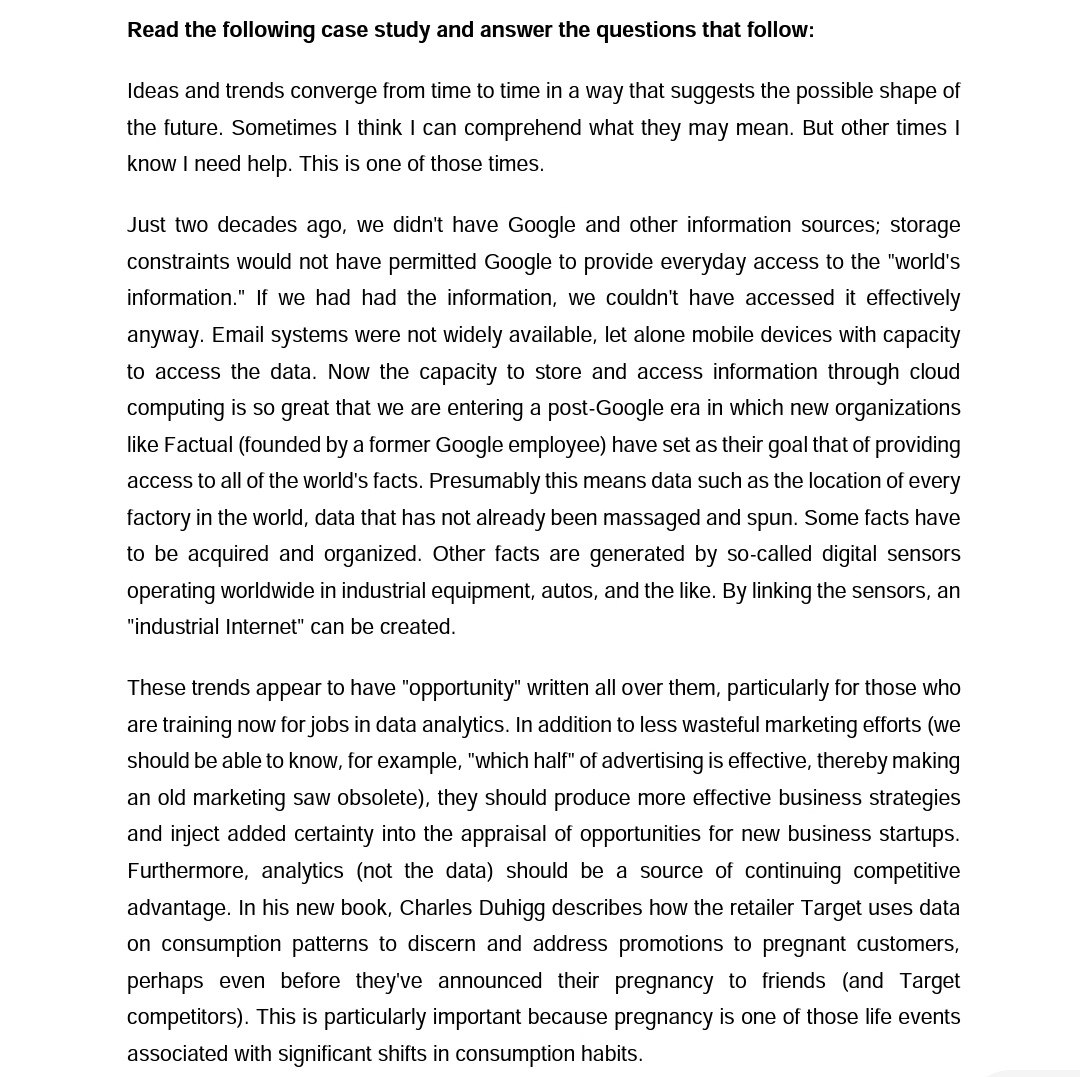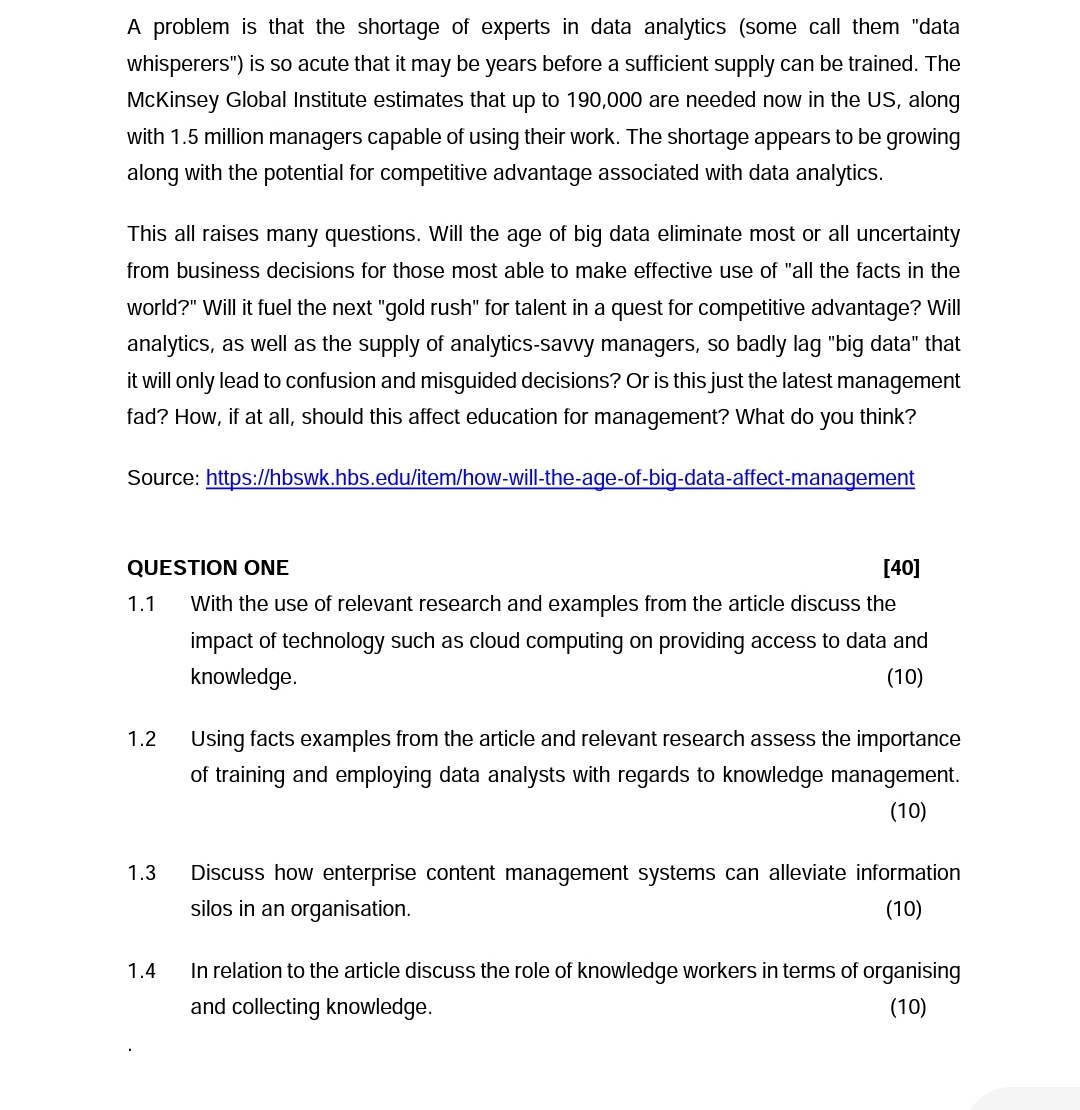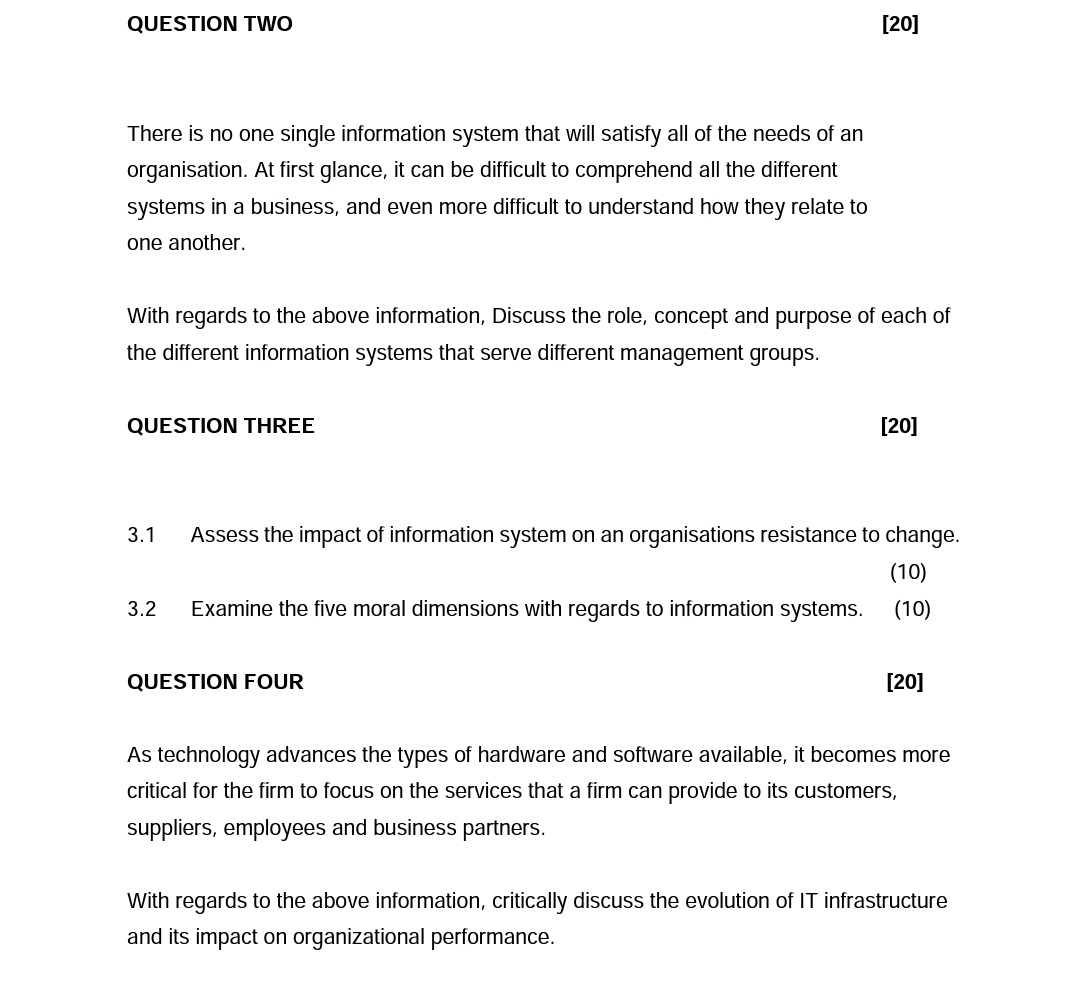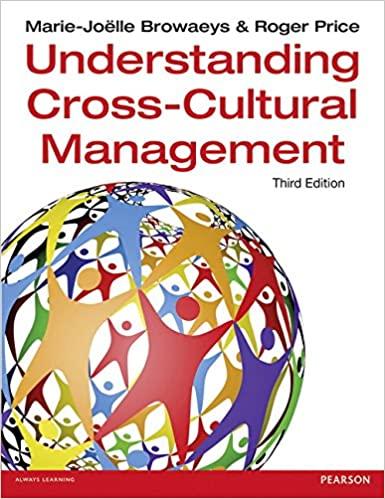Answered step by step
Verified Expert Solution
Question
1 Approved Answer
Read the following case study and answer the questions that follow: Ideas and trends converge from time to time in a way that suggests



Read the following case study and answer the questions that follow: Ideas and trends converge from time to time in a way that suggests the possible shape of the future. Sometimes I think I can comprehend what they may mean. But other times I know I need help. This is one of those times. Just two decades ago, we didn't have Google and other information sources; storage constraints would not have permitted Google to provide everyday access to the "world's information." If we had had the information, we couldn't have accessed it effectively anyway. Email systems were not widely available, let alone mobile devices with capacity to access the data. Now the capacity to store and access information through cloud computing is so great that we are entering a post-Google era in which new organizations like Factual (founded by a former Google employee) have set as their goal that of providing access to all of the world's facts. Presumably this means data such as the location of every factory in the world, data that has not already been massaged and spun. Some facts have to be acquired and organized. Other facts are generated by so-called digital sensors operating worldwide in industrial equipment, autos, and the like. By linking the sensors, an "industrial Internet" can be created. These trends appear to have "opportunity" written all over them, particularly for those who are training now for jobs in data analytics. In addition to less wasteful marketing efforts (we should be able to know, for example, "which half" of advertising is effective, thereby making an old marketing saw obsolete), they should produce more effective business strategies and inject added certainty into the appraisal of opportunities for new business startups. Furthermore, analytics (not the data) should be a source of continuing competitive advantage. In his new book, Charles Duhigg describes how the retailer Target uses data on consumption patterns to discern and address promotions to pregnant customers, perhaps even before they've announced their pregnancy to friends (and Target competitors). This is particularly important because pregnancy is one of those life events associated with significant shifts in consumption habits. A problem is that the shortage of experts in data analytics (some call them "data whisperers") is so acute that it may be years before a sufficient supply can be trained. The McKinsey Global Institute estimates that up to 190,000 are needed now in the US, along with 1.5 million managers capable of using their work. The shortage appears to be growing along with the potential for competitive advantage associated with data analytics. This all raises many questions. Will the age of big data eliminate most or all uncertainty from business decisions for those most able to make effective use of "all the facts in the world?" Will it fuel the next "gold rush" for talent in a quest for competitive advantage? Will analytics, as well as the supply of analytics-savvy managers, so badly lag "big data" that it will only lead to confusion and misguided decisions? Or is this just the latest management fad? How, if at all, should this affect education for management? What do you think? Source: https://hbswk.hbs.edu/item/how-will-the-age-of-big-data-affect-management QUESTION ONE 1.1 [40] With the use of relevant research and examples from the article discuss the impact of technology such as cloud computing on providing access to data and knowledge. (10) 1.2 Using facts examples from the article and relevant research assess the importance of training and employing data analysts with regards to knowledge management. (10) 1.3 1.4 Discuss how enterprise content management systems can alleviate information silos in an organisation. (10) In relation to the article discuss the role of knowledge workers in terms of organising and collecting knowledge. (10) QUESTION TWO There is no one single information system that will satisfy all of the needs of an organisation. At first glance, it can be difficult to comprehend all the different systems in a business, and even more difficult to understand how they relate to one another. [20] With regards to the above information, Discuss the role, concept and purpose of each of the different information systems that serve different management groups. QUESTION THREE [20] 3.1 Assess the impact of information system on an organisations resistance to change. (10) 3.2 Examine the five moral dimensions with regards to information systems. (10) QUESTION FOUR [20] As technology advances the types of hardware and software available, it becomes more critical for the firm to focus on the services that a firm can provide to its customers, suppliers, employees and business partners. With regards to the above information, critically discuss the evolution of IT infrastructure and its impact on organizational performance.
Step by Step Solution
There are 3 Steps involved in it
Step: 1
Question One 11 Impact of Cloud Computing on Access to Data and Knowledge Cloud computing has revolutionized the accessibility of data and knowledge by overcoming storage constraints and enabling effi...
Get Instant Access to Expert-Tailored Solutions
See step-by-step solutions with expert insights and AI powered tools for academic success
Step: 2

Step: 3

Ace Your Homework with AI
Get the answers you need in no time with our AI-driven, step-by-step assistance
Get Started


